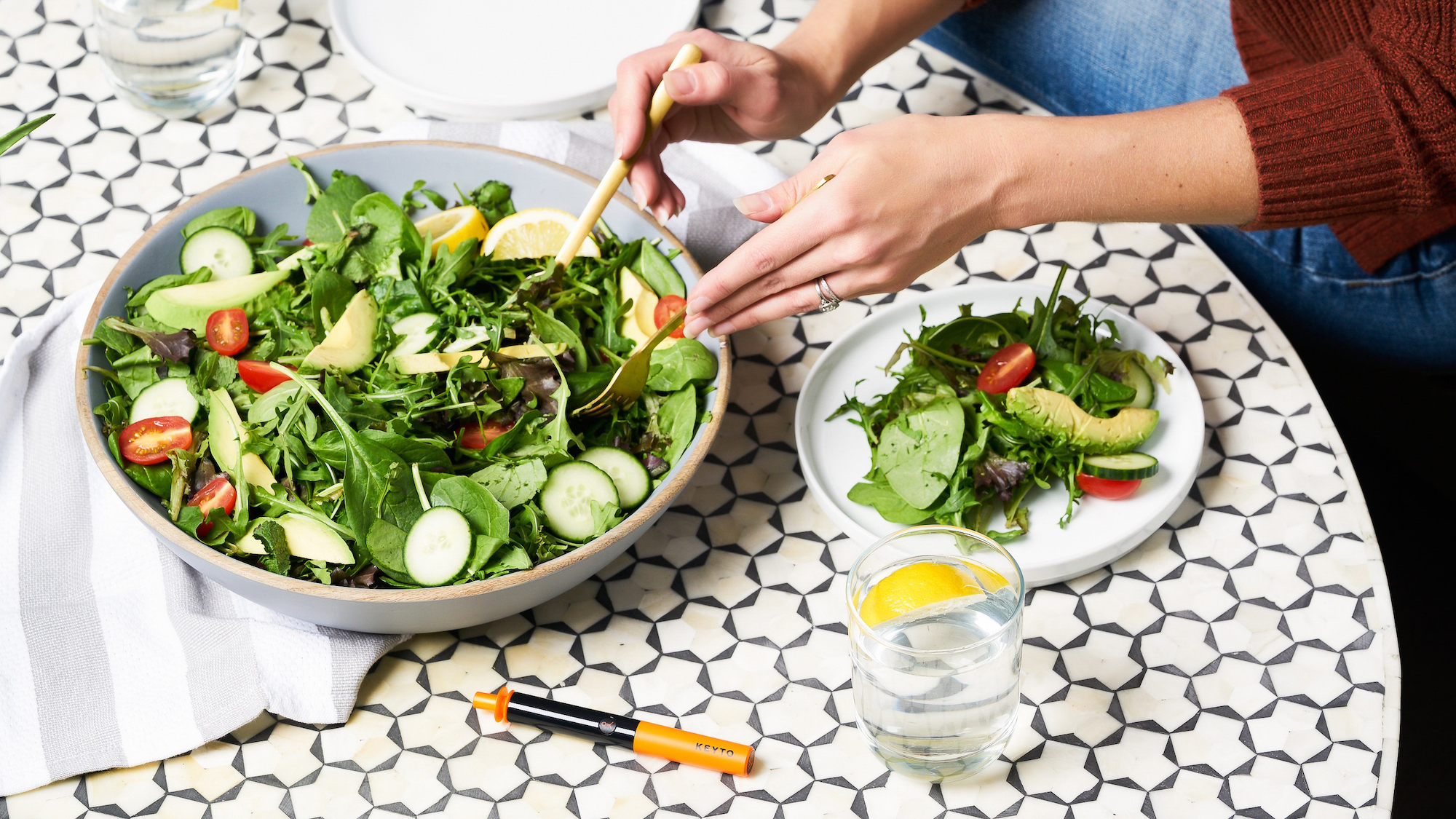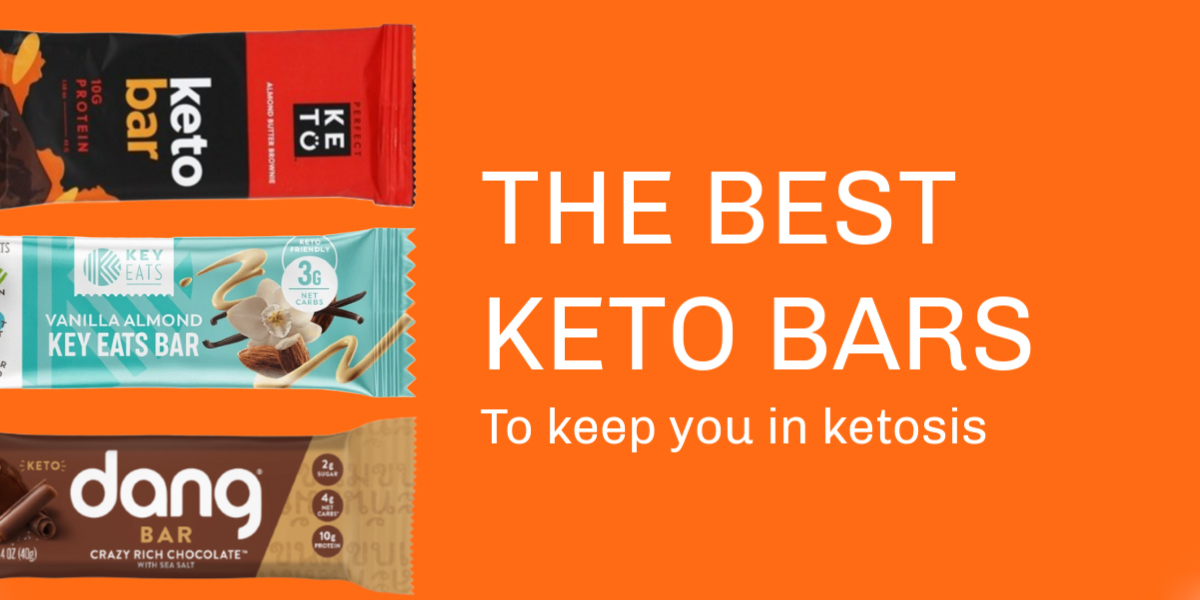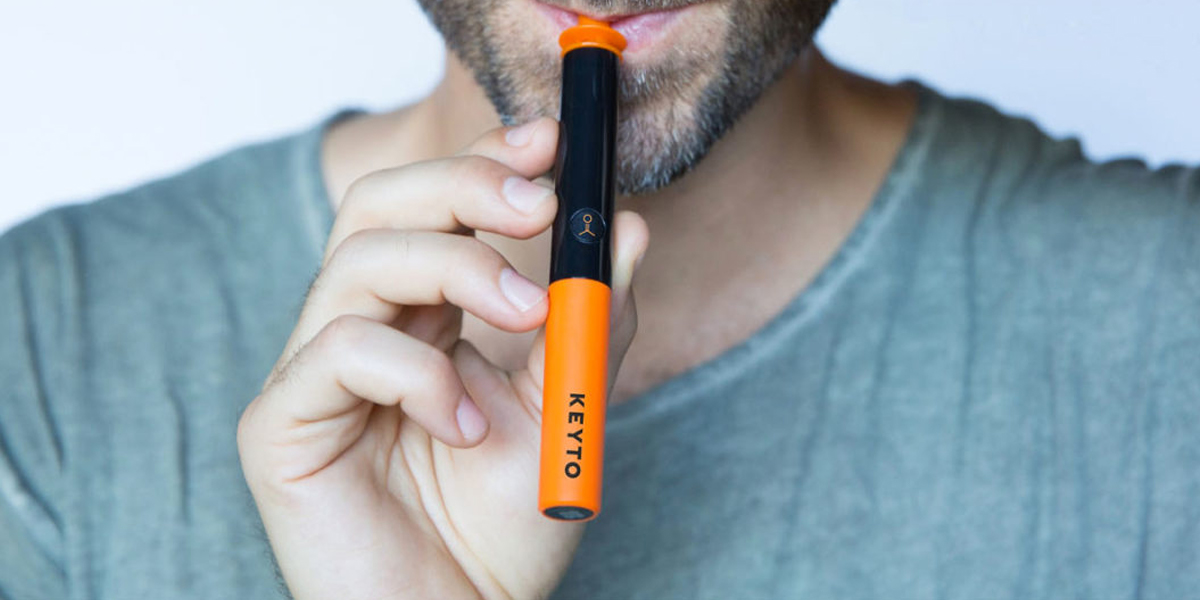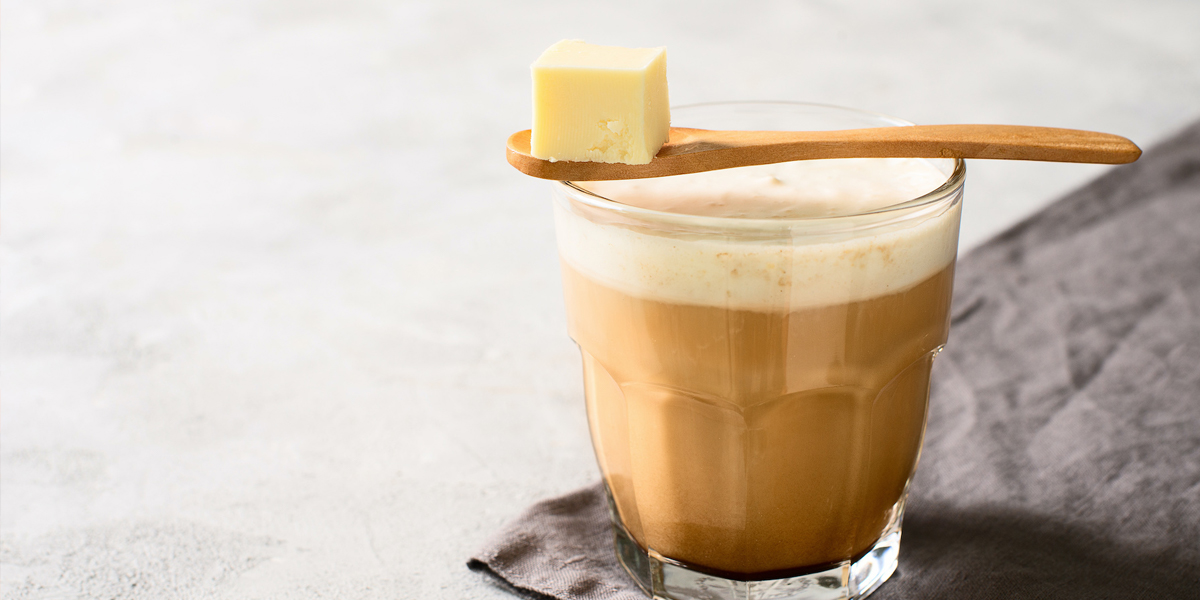Keyto Takeaway
One of the major challenges for a starter ketogenic dieter is being as prepared as possible. We’ve found that having the following items in our fridges and pantries have immensely helped keep us on track!
- Cruciferous vegetables (such as arugula, broccoli, kale, and brussels sprouts – this ensures a simple, healthy meal is never far out of reach
- Avocados – we love making a quick and simple guacamole or eating avocado with extra-virgin olive oil and balsamic vinegar whenever we need an energy boost!
- MCT Oil – it’s the go-to ketogenic supplement for a reason!
- Coconut flour – whenever we can’t keep our baker’s hat off, coconut flour helps ensure we’re staying low-carb with whatever we end up baking!
5 Staple Items Every Keto Dieter Should Have At Home
Here are 5 items that every Keto dieter should have at home to incorporate fewer carbohydrates and more healthy fats into their diet.
Cruciferous Vegetables
When it comes to Keto staples in your fridge, you’ll want to keep stocked up on cruciferous vegetables.
Delicious cruciferous vegetables that are keto-friendly staples include bok choy, arugula, cauliflower, broccoli, cabbage, kale, and brussel sprouts to name a few.
These veggies are low carb and naturally high in vitamins and minerals like vitamin K and folate. The dark green cruciferous vegetables like kale are high in phytonutrients, making them excellent natural sources of vitamins A and C.[vi]
Avocados
Avocado lovers rejoice. The avocado is one of the best keto-friendly foods you’ll find that’s also rich in healthy fats.
Containing around 20 beneficial vitamins and minerals, which includes iron, zinc, magnesium, and manganese, this staple that every keto dieter should have at home is a must. What’s more, it only contains 2 net carbs per 100 grams, making it the perfect addition to your staples for the Keto diet.[vii] [viii]
MCT Oil
One recommended supplement for Keto is MCT oil. Taken from fatty acids that are found in natural oils such as palm oil and coconut oil, MCT oil can be added to any type of food.
MCT oil, which stands for medium chain triglycerides, is made up of a number of healthy saturated fatty acids that your body can easily break down and convert to energy. This boost of energy is also perfect if you’re combining exercise with the Keto diet, because unlike carbs that take a long time to process MCT oil works quickly.[i]
MCT oil is a staple for Keto dieters because it helps boost the production of ketones and provides the body with more energy at a quicker rate, making it beneficial for weight loss. MCT oil is the perfect way of jumpstarting your body into an elevated state of ketosis, especially if you begin to experience a weight loss plateau.[ii]
Keto Flour Substitutes
Thankfully, there are a number of Keto flour substitutes that allow you to continue making some of your favorite foods, such as Keto cake or Keto bread.
Almond flour is probably one of the most popular flour staples for the Keto diet. Versatile and easy to work with, you can whip up a plethora of Keto-friendly dishes, such as 90 second bread, almond flour pancakes, low-carb Keto muffins, bread, brownies, and much more.
Another flour staple for the Ketogenic diet is coconut flour. Made out of dehydrated coconut meat, coconut flour is lower in calories than almond flour with one cup of flour containing just 60 calories. Coconut flour also has 12 grams of fiber per cup[iv], which makes it excellent for your digestive health.
Ground flax meal is yet another flour staple for the Keto diet. Otherwise known as linseed flour, flax meal is highly nutritious and will provide you with an excellent source of vitamin B1, copper, and lignans, which is a plant compound that will help fight free radicals.[v]
Low Carb Sweeteners (OPTIONAL)
There are many sweeteners for keto, some of which are better than others. Swerve is one of the keto pantry staples for good reason. This sugar replacement, which is made up of a blend of prebiotic fibers and erythritol doesn’t negatively affect your blood sugar levels like other sweeteners. With a real sugar-like taste and zero calories, it’s also easily digested in the upper area of the small intestine, which means it won’t reach your gut’s taste receptors and therefore won’t induce those all-too familiar sweet cravings.
[i] Nosaka N et al., Effect of ingestion of medium-chain triacylglycerols on moderate- and high-intensity exercise in recreational athletes. J Nutr Sci Vitaminol (Tokyo). 2009 Apr;55(2):120-5
[ii] http://diabetes.diabetesjournals.org/content/18/2/96.short
[iii] https://link.springer.com/chapter/10.1007%2F978-0-387-85998-9_45
[iv] https://www.sciencedirect.com/science/article/pii/S1466856406000452
[v] https://onlinelibrary.wiley.com/doi/abs/10.1111/j.1541-4337.2009.00105.x
[vi] https://www.sciencedirect.com/science/article/pii/S1756464611000843
[vii] http://209.143.153.251/WAC2/WAC2_p025.pdf
[viii] https://nutritionj.biomedcentral.com/articles/10.1186/1475-2891-12-1
[ix] https://www.sciencedirect.com/science/article/pii/S0378874105001121





